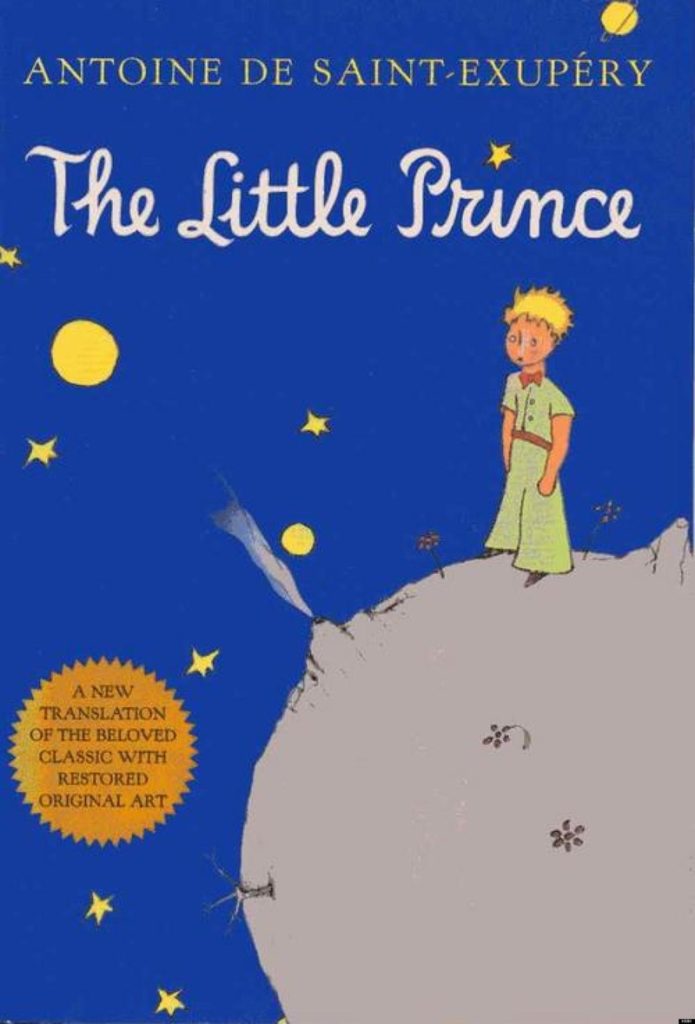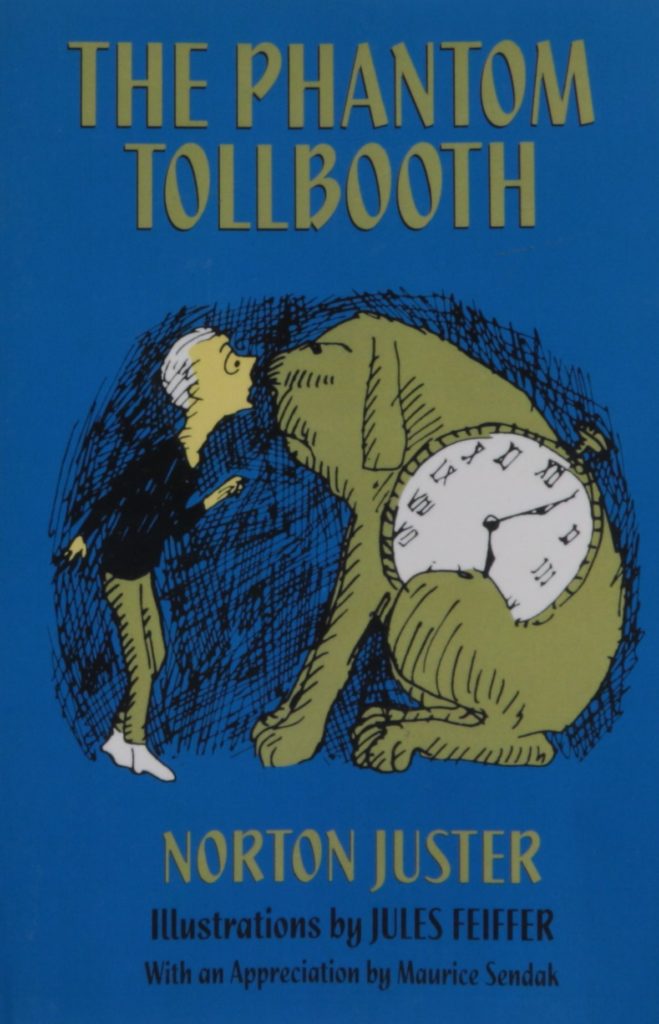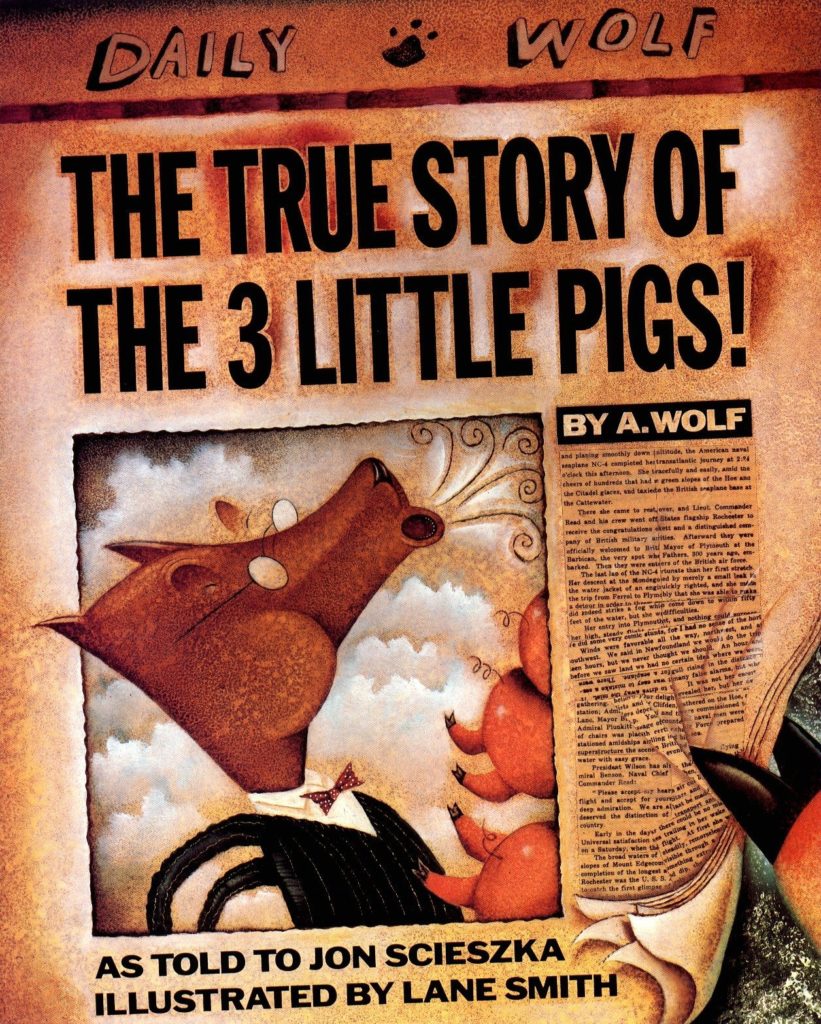
Is there anything quite like rediscovering a favorite children’s book? Maybe tucked away in some corner of the family attic, you have found it: dog-eared, water-damaged, weary with love. Well, we’ve dusted off some of the original reviews of these cherished childhood classics. In her 1952 New York Times review, Eudora Welty raved Charlotte’s Web has “the good backbone of succinctness that only the most highly imaginative stories seem to grow.” In 1937, in The Times Literary Supplement, C.S. Lewis predicted that “The Hobbit may well prove a classic.” And let’s not forget Dorothy Parker in The New Yorker, claiming that Winnie-the-Pooh makes her want to throw up. Take a stroll down memory lane with us, and see if you agree with these first readers.
*

Winnie-the-Pooh by A.A. Milne (1928)
The more it
SNOWS-tiddley-pom,
The more it
GOES-tiddley-pom
The more it
GOES-tiddley-pom
On
Snowing.
“… although the work is in prose, there are frequent droppings into cadenced whimsey. This one is designated as a ‘Hum,’ that pops into the head of Winnie-the-Pooh as he is standing outside Piglet’s house in the snow … so Good a Hum did it seem that he and Piglet started right out through the snow to Hum It Hopefully to Eeyore. Oh, darn–there I’ve gone and given away the plot. Oh, I could bite my tongue out … And it is that word ‘hummy,’ my darlings, that makes the first place in The House at Pooh Corner at which Tonstant Weader Fwowed up.”
–Dorothy Parker (a.k.a. Constant Reader), The New Yorker, October 20, 1928

The Hobbit by J.R.R. Tolkien (1937)
So comes snow after fire, and even dragons have their endings.
“To define the world of The Hobbit is, of course, impossible, because it is new. You cannot anticipate it before you go there, as you cannot forget it once you have gone. The author’s admirable illustrations and maps of Mirkwood and Goblingate and Esgaroth give one an inkling—and so do the names of the dwarf and dragon that catch our eyes as we first ruffle the pages. But there are dwarfs and dwarfs, and no common recipe for children’s stories will give you creatures so rooted in their own soil and history as those of Professor Tolkien … You must read for yourself to find out how inevitable the change is and how it keeps pace with the hero’s journey. Though all is marvellous, nothing is arbitrary: all the inhabitants of Wilderland seem to have the same unquestionable right to their existence as those of our own world … The Hobbit…will be funnier to its youngest readers, and only years later, at a tenth or a twentieth reading, will they begin to realise what deft scholarship and profound reflection have gone to make everything in it so ripe, so friendly, and in its own way so true. Prediction is dangerous: but The Hobbit may well prove a classic.”
–C.S. Lewis, The Times Literary Supplement, October 2, 1937 (Paris Review link)

The Little Prince by Antoine de Saint-Exupéry (1943)
And now here is my secret, a very simple secret:
It is only with the heart that one can see rightly; what is essential is invisible to the eye.
“There is a verse in the New Testament which is often quoted but never taken seriously. Had it been we would not today be tearing the planet and its civilization to bits. That verse in the 18th Chapter of Matthew tells us that except we become as children we cannot enter the Kingdom. And I hope I give no offense in this connection if I say that the text may be applied to literature. For I think that much of the wisest literature is that which seems written for children—stories of Aesop and Hans Christian Andersen, for example. And please consider those sentences my review of a beautiful book written and illustrated by Antoine de Saint-Exupéry, The Little Prince. For here is a sweetly and simply told tale of a little boy from a very little asteroid, so big with meaning that even important people will find wisdom in it; so simply told that even critics and college professors ought to understand its beauty and meaning; a thin little book filled with rich substance; something easy to read and remember and hard to forget.”
-Paul Jordan-Smith, The Los Angeles Times, 1943

Goodnight Moon by Margaret Wise Brown (1947)
Goodnight stars, goodnight air, goodnight noises everywhere.
“Rhythmic, drowsy phrases are set to pictures that compliment them perfectly in this new go-to-sleep book for very little children. Warm and bright in color, the illustrations show all the cozy, familiar details of a big cheerful nursery, with a bunny tucked into bed ready for sleep. First he takes a look around the room and recognizes its contents while the lamp shines brightly; then, as the room darkens, he says goodnight to all the real and imaginary things he knows are there. The sound of the words, the ideas they convey and the pictures combine to lull and reassure when bedtime and darkness come. The rhythm of the little story is like the sing-song of disconnected thoughts with which children so often put themselves to sleep, and should prove very effective in the case of a too wide-awake youngster.”
–Virginia H. Mathews, The New York Times, September 7, 1947

All-of-a-Kind Family by Sydney Taylor (1951)
Between sobs, the muffled words came slowly, “My—library book—is—lost.” Lost!
The children looked at each other in dismay. Such a thing had never happened to the family before.
“Although the author’s nostalgia for times past weighs heavily now and then to point the story adultward, this is a honey, gentle book, tailor-made for little girls.”

Charlotte’s Web by E.B. White (1952)
“Why did you do all this for me?” he asked. “I don’t deserve it. I’ve never done anything for you.”
“You have been my friend,” replied Charlotte. “That in itself is a tremendous thing.”
“E.B. White has written a book for children, which is nice for us older ones as it calls for big type. The book has liveliness and felicity, tenderness and unexpectedness, grace and humor and praise of life, and the good backbone of succinctness that only the most highly imaginative stories seem to grow … What the book is about is friendship on earth, affection and protection, adventure and miracle, life and death, trust and treachery, pleasure and pain, and the passing of time. As a piece of work it is just about perfect, and just about magical in the way it is done … ‘At-at-at, at the risk of repeating myself,’ as the goose says, Charlotte’s Web is an adorable book.”
–Eudora Welty, The New York Times, October 19, 1952

The Phantom Tollbooth by Norton Juster (1962)
So many things are possible just as long as you don’t know they’re impossible.
“The Phantom Tollbooth is something every adult seems sure will turn into a modern Alice. It is a morality-fantasy about Milo and his adventures beyond the magic tollbooth … The obviously guess is that the appeal of this sort of writing is directed towards just the sort of adults who derive a perfectly grown-up pleasure from regularly rereading the Alices. As one might expect, it is illustrated by every grown-up’s favourite child-like pictures with the built-in sad sophistication, the work of Jules Feiffer … There was a time, only recently come to an end, when no one had the smallest anxiety about the child’s appreciation and understanding of humour, sombre books about spelling and dying were thought very proper for child consumption, and children went on passing round their own bold, unbiddable, unpretty and unappetizing verbal jokes … It might well be doubted whether children like to laugh at all; but if anyone ever genuinely laughed at the banana skin joke, it was probably a child that first thought it funny.”
–Times Literary Supplement, November 23, 1962

Corduroy by Don Freeman (1968)
“A bear missing a button looks shopworn, so Corduroy sets out after the department store closes to find his … But a little girl wants him badly enough to empty her piggy bank and he goes home to a bed just the right size and, to make him more comfortable, a button to fasten his shoulder strap. Corduroy and Lisa break the spell by talking to each other but otherwise it’s the sort of predicament that children recognize, made more poignant by the plea in Corduroy’s eyes.”

Sylvester and the Magic Pebble by William Steig (1969)
In all his young life Sylvester had never had a wish gratified so quickly. It struck him that magic must be at work, and he guessed that the magic must be in the remarkable-looking red pebble. (Where indeed it was.)
“Sylvester’s a donkey but don’t call him a jackass … if you’re not moved by Sylvester’s predicament, by the lion’s bewilderment, by moods forlorn and joyous, if you don’t take to the logical, easy stance of the animal friends (by chance, I suppose, the blue-coated police are pigs), if you don’t appreciate the fair beauty of Steig’s landscapes, well, then one will know for sure who’s the donkey.”
–George A. Woods, The New York Times, February 16, 1969

Where the Sidewalk Ends by Shel Silverstein (1974)
If you are a dreamer, a wisher, a liar,
A hope-er, a pray-er, a magic bean buyer . . .
If you’re a pretender, come sit by my fire
“There are a number of rollicking patter songs that a parent could well enjoy tripping off for a child audience … A magnificent catalogue of garbage that’s fun to read aloud and that should delight any youngster who’s been collecting those unofficial camp and kindergarten chants on the side … In short, [Shel Silverstein is] what his press releases call a Renaissance Man. The trouble is he isn’t. Not even 19th‐century eccentric. He’s a very facile 20th‐century man with a sense of where the market is. The result is sense of derivativeness … Light verse—especially light verse that slides over into logical nonsense—has to be impeccable. And Shel Silverstein is very sloppy about false rhymes … all that aside, there’s some nice, lively stuff in here, good for reading aloud on a sleety weekend afternoon. Just don’t make it the only book of verse on the children’s shelves.”
–Sherwin D. Smith, The New York Times, November 3, 1974

Miss Rumphius by Barbara Cooney (1982)
You must do something to make the world more beautiful.
“You might almost believe that Barbara Cooney had a Great-Aunt Alice Rumphius who did just as we read here—else why go to the trouble of spinning out a yarn, composed of transparent storybook motifs…just to arrive at an old lady who strews lupine seeds about? … in Barbara Cooney’s precisionist Maine coast pictures, the drifts of lupine blooms are a tribute to the lupine lady per se. It’s a lovely notion, in short, if not much (or too much) of a story.”

The BFG by Roald Dahl (1982)
Don’t gobblefunk around with words.
“The BFG (Big Friendly Giant) is a book not all adults will like, but most kids will. And why shouldn’t they? It is one of Dahl’s better efforts … Dahl’s BFG is a delight … One of his great pleasures is making ‘whizzpoppers’ (expelling gas), which he does proudly near the book’s end in the presence of the queen of England. Highly unusual, often hilarious, and occasionally vulgar, even grisly. In other words, pure Dahl.”
–Ilene Cooper, Booklist, January 1, 1983

The True Story of the 3 Little Pigs by Jon Scieszka (1989)
Everybody knows the story of the Three Little Pigs. Or at least they think they do.
“Long ago George Orwell described looking at pigs and looking at men and being unable to decide which was which … The striking parallels between pig and man are again quite evident in three recent books: The True Story of the 3 Little Pigs by Jon Scieszka, The Three Little Pigs and the Fox by William H. Hooks and The Three Little Pigs by James Marshall. These books involve young pigs, so they are best understood and appreciated by young people. There are 10 very distinct swines here, as well as two wolves and a fox. Some readers may find themselves identifying with the wolf in one of these books. I know I did … My favorite is Jon Scieszka’s True Story of the 3 Little Pigs. It is a kind of revisionist history in that it is told by one Alexander T. Wolf, who wants it to be known that the standard version of the story is filled with half-truths, dissemblance, hypocrisy, pseudology and slander. He endeavors to set the record straight, and in Mr. Scieszka’s first book he does an admirable job of it.”
–Frank Gannon, The New York Times, November 12, 1989

Oh, the Places You’ll Go! by Dr. Seuss (1990)
Congratulations!
Today is your day.
You’re off to Great Places!
You’re off and away!
“It can’t be! How could he, without our consent, / Give up tickles and giggles, unless it’s for Lent? … it takes a searching eye and ear to find a ton of fun in Dr. Seuss’ latest rendition of life’s ‘Great Balancing Act’ … The celebrated whimsicalist who has given young readers and gigglers so many outrageous adventures over the years has opted for a more purposeful stroll in his latest outing … Where’s the sly beastie waiting to toss a big dollop of gooky green oobleck on this path to success? Horton, old pal, can you hear us? … If an elephant’s faithful, 100 percent, we can be, too. We’ll simply sit here and wait for Dr. Seuss to tell us another wondrously silly tale, as only he can tell them.”
–Diane Manuel, The New York Times, March 11, 1990

The Giver by Lois Lowry (1993)
Frightened meant that deep, sickening feeling of something terrible about to happen.
“Ms. Lowry has been embraced by a generation of American children for her humorous series about Anastasia Krupnik, but it is her haunting and unpredictable serious novels…that help make her work so rewarding … Even children who’ve never heard the word ‘allegory’ could be swept up in the story of young Jonas … Set apart by his station, Jonas faces a lonely and desperate struggle with evil disguised as sameness, and ultimately, armed with knowledge of emotion as well as sensation, he makes a challenging choice. Despite occasional logical lapses, The Giver, a powerful and provocative novel, is sure to keep older children reading. And thinking.”
–Karen Ray, The New York Times, October 31, 1993

Harry Potter and the Sorcerer’s Stone by J.K. Rowling (1998)
It takes a great deal of bravery to stand up to our enemies, but just as much to stand up to our friends.
“Rowling’s first novel, which has won numerous prizes in England, is a brilliantly imagined and beautifully written fantasy that incorporates elements of traditional British school stories without once violating the magical underpinnings of the plot. In fact, Rowling’s wonderful ability to put a fantastic spin on sports, student rivalry, and eccentric faculty contributes to the humor, charm, and, well, delight of her utterly captivating story.”
–Michael Cart, Booklist, September 15, 1998

